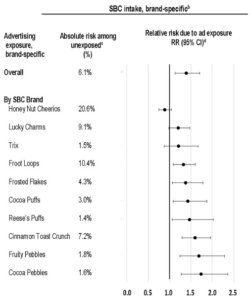I haven’t posted an industry-funded study with predictable results in a while but when I saw this headline from FoodNavigator-Asia, I couldn’t resist.
The headline: “The most important meal of the day: Daily breakfast may lower obesity risk in schoolchildren — Nestlé study.”
High marks to FoodNavigator-Asia for naming the funder in the headline.
Its article referred to this study:
Breakfast consumption among Malaysian primary and secondary school children and relationship with body weight status – Findings from the MyBreakfast Study, by E Siong Tee, Abdul Razak Nurliyana, A Karim Norimah, Hamid Jan B Jan Mohamed , Sue Yee Tan, Mahenderan Appukutty, Sinead Hopkins, Frank Thielecke, Moi Kim Ong, Celia Ning, Mohd Taib Mohd Nasir. Asia Pacific Journal of Clinical Nutrition 2018;27(2):421 – 432.
Purpose: To determine the relationship between breakfast consumption and body weight status among primary and secondary school children in Malaysia among 5,332 primary school children aged 6 to 12 years and 3,000 secondary school children aged 13 to 17 years.
Results: “The proportion of overweight/obesity was higher among breakfast skippers (boys: 43.9%, girls: 30.5%) than regular breakfast eaters (boys: 31.2%, girls: 22.7%)…. Compared to regular breakfast eaters, primary school boys who skipped breakfast were 1.71 times (95% CI=1.26-2.32, p=0.001) more likely to be overweight/obese, while the risk was lower in primary school girls (OR=1.36, 95% CI=1.02-1.81, p=0.039) and secondary school girls (OR=1.38, 95% CI=1.01-1.90, p=0.044).”
Conclusion: “Regular breakfast consumption was associated with a healthier body weight status and is a dietary behaviour which should be encouraged.”
Author disclosures: “This study was funded by Cereal Partners Worldwide (CPW), Lausanne, Switzerland and Nestlé R&D Center, Singapore. Sinead Hopkins and Frank Thielecke were working for CPW, Lausanne, Switzerland, and Moi Kim Ong and Celia Ning were working for Nestlé R&D Center, Singapore, when the study was conducted. All authors declare that they have no conflicts of interests.”
I was particularly interested in this study for several reasons:
No, I do not believe that breakfast is the most important meal of the day (I’m not much of a breakfast eater). Eat when you feel hungry.
It does make sense to think that children should be fed at regular intervals and should not go to school hungry. It also makes sense that regular meals encourage healthier patterns. But preventing obesity? That seems like a stretch, especially when the study’s funders have a financial interest in selling breakfast cereals.





 Next, see what’s happening to breakfast from the point of view of the food industry.
Next, see what’s happening to breakfast from the point of view of the food industry.
